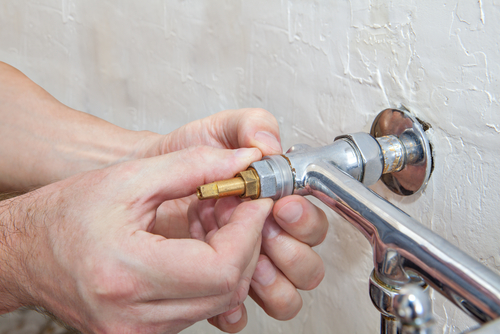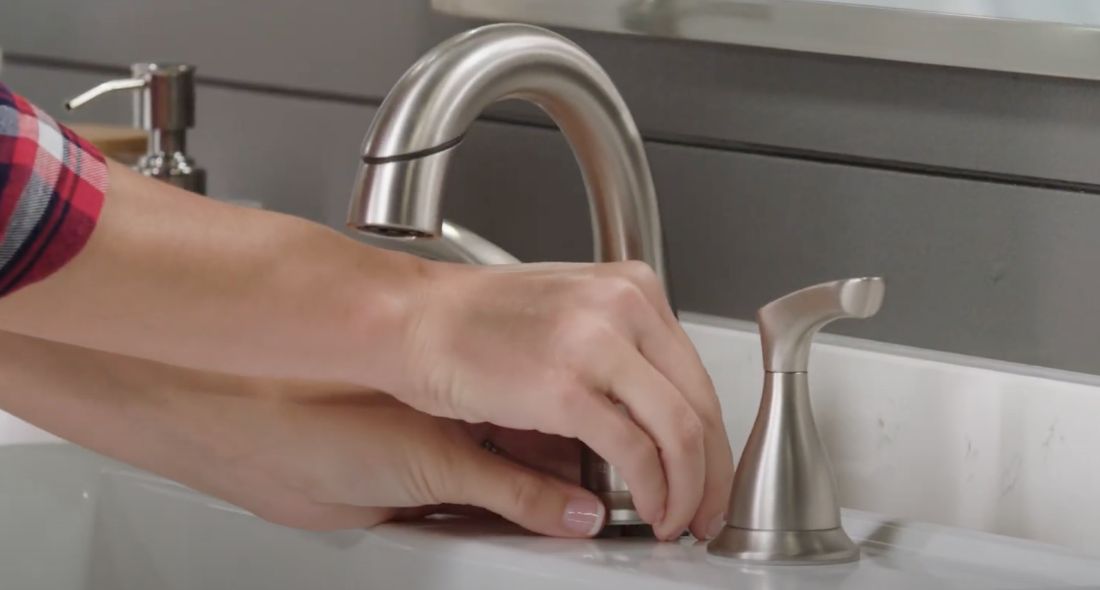When It's Important to Rectify a Broken Faucet
When It's Important to Rectify a Broken Faucet
Blog Article
Each person seems to have their own perception with regards to Leaky Faucets: Why They Happen & What to Do About Them.

Trickling taps could seem like a small trouble, but their impact surpasses just the nuisance of the noise. From drainage to incurring unnecessary monetary prices and wellness dangers, disregarding a leaking tap can result in different consequences. In this post, we'll delve into why it's essential to address this usual home issue immediately and properly.
Waste of Water
Environmental Influence
Trickling taps add substantially to water wastefulness. According to the Environmental Protection Agency (EPA), a solitary tap dripping at one drip per second can squander more than 3,000 gallons of water per year. This not only stress water resources but likewise influences ecological communities and wildlife depending on them.
Financial Prices
Boosted Water Bills
Past the environmental impact, leaking faucets can pump up water costs considerably. The gathered wastefulness with time equates into greater utility costs, which can have been avoided with timely repair services.
Prospective Property Damages
Furthermore, long term leaking can lead to damage to components and surface areas surrounding the faucet. Water build-up can create discoloration, corrosion, and even structural problems if left neglected, causing additional repair prices.
Health and wellness Problems
Mold And Mildew and Mildew Growth
The continuous existence of dampness from a dripping faucet produces an ideal atmosphere for mold and mold growth. These fungis not only jeopardize indoor air top quality yet additionally present health dangers, particularly for people with breathing conditions or allergies.
Waterborne Illness
Stagnant water in trickling faucets can end up being a breeding place for germs and other pathogens, raising the threat of waterborne illness. Contaminants such as Legionella germs thrive in stationary water, possibly resulting in significant health problems when consumed or inhaled.
Do it yourself vs. Professional Fixing
Benefits and drawbacks of Do It Yourself Repair Service
While some might attempt to fix a leaking faucet themselves, do it yourself repairs include their own collection of obstacles. Without correct understanding and tools, DIY efforts can exacerbate the issue or lead to insufficient repair services, extending the trouble.
Benefits of Hiring a Professional Plumber
Employing an expert plumber makes sure that the underlying source of the trickling tap is addressed effectively. Plumbing technicians have the competence and tools to detect and fix faucet concerns successfully, saving time and reducing the threat of further damage.
Step-by-Step Overview to Taking Care Of a Dripping Faucet
Devices Called for
Before attempting to fix a leaking faucet, collect the necessary tools, including a flexible wrench, screwdrivers, substitute parts (such as washers or cartridges), and plumber's tape.
Common Faucet Issues and Their Solutions
Recognize the sort of tap and the particular problem causing the drip. Common issues include damaged washers, corroded shutoff seats, or damaged O-rings. Refer to manufacturer guidelines or on-line tutorials for step-by-step advice on repair work.
Preventive Measures
Routine Maintenance Tips
To stop leaking faucets, perform routine maintenance such as cleaning up aerators, checking for leaks, and replacing damaged parts promptly. Additionally, consider mounting water-saving tools or updating to more efficient fixtures.
Value of Prompt Repairs
Resolving dripping faucets as soon as they're noticed avoids more water waste and prospective damage, inevitably conserving both water and money in the long run.
Effect On Residential Or Commercial Property Worth
Assumption of Well-Maintained Residential Property
Preserving a residential or commercial property in good condition, consisting of attending to maintenance issues like leaking taps, boosts its regarded value and value among potential buyers or occupants.
Impact on Resale Worth
Features with well-maintained plumbing fixtures, consisting of faucets, command greater resale worths in the realty market. Dealing with dripping taps can add to a favorable impact during building examinations and negotiations.
Environmental Duty
Individual Contribution to Preservation
Taking obligation for repairing dripping taps lines up with broader efforts toward water conservation and ecological sustainability. Every person's activities jointly make a considerable effect on maintaining priceless sources.
Sustainable Living Practices
By focusing on punctual repairs and embracing water-saving routines, individuals add to sustainable living methods that profit both existing and future generations.
Final thought
Dealing with a dripping tap surpasses mere comfort; it's an essential step toward saving water, minimizing economic costs, and protecting health and residential property. Whether with DIY fixings or specialist aid, taking action to deal with leaking taps is a little yet impactful method to advertise responsible stewardship of resources and contribute to a much healthier, more sustainable future.
Why Are My Faucets Dripping (And Can I Fix it Myself)?
Causes of a Dripping or Leaking Faucet
Whether you’re hearing drops of water falling and hitting a sink, or noticing water ooze out from the base of the spout, you shouldn’t ignore a dripping or leaking faucet. And, the good news is, sometimes you can fix the problem yourself.
In this article, we’ll review a few common causes of dripping and leaky. We’ll also walk you through some basic ways to find the problem and handle it without calling anyone — and let you know when to call in a pro.
But, no matter what the cause, or whether you can handle it on your own, the sooner you address it, the better.
Each drip may be a tiny amount of water. But, they all add up quickly. According to the U.S. Geological Survey, one faucet losing one drop every 20 seconds — five a minute — wastes around a liter of water every day, and 173 gallons a year.
Add in more than one in your house, and it’s a lot of water to waste. So, we’ll help you get to the bottom of things quickly.
Four Reasons Your Faucet May Be Dripping
Aerator is Damaged or Unseated Valve Seat is Corroded O Ring is Loose or Worn Out Part of the Assembly is Loose Aerator is Damaged or Unseated
If you unscrew the end of your faucet, you’ll find the aerator. It’s the little stem piece with a screen on it that shuts off the water circulation.
If it’s damaged, or if it’s not sitting right, it will allow water to pass through.
Valve Seat is Corroded
Next is the valve seat, which is connected to the washer. If the washer wasn’t in place correctly, then it could have ground against the seat. Over time, this damages the valve seat.
The problem could also be corrosion: Over time, the part has worn out, and it’s now allowing water to pass through.
O Ring is Loose or Worn Out
Since the o ring is only a small rubber gasket, it’s a common reason why the faucet is dripping. You’ll find it at the base of the faucet, and it’s there to keep water from coming out where it’s not supposed to.
However, it’s common for the o ring to wear out over time. When it does, you’ll notice a drip.
Part of the Assembly is Loose
So far, we’ve looked at a few small, specific parts. But, the problem could be anywhere in the assembly if something’s out of place.
Even if a part isn’t damaged, over time, it may have become loose or dislodged. It could be the parts we mentioned, or the aerator at the tip of the faucet, the stem itself,
Can I Fix a Leaky Faucet Myself?
Depending on the problem, and how handy you are, there’s a chance you can fix a leaky faucet without calling a professional. But, you do run the risk of making the problem worse.
If it’s a small drip, you can certainly try a few troubleshooting tactics. We’ll walk you through them in a moment.
But, no matter what, your first step should be shutting off the water coming into the faucet. You should find a shutoff valve under the sink on the pipes leading to it. Turn each one clockwise until they close tightly.
Next, make sure you have the right tools for whatever you’re attempting. It’s tempting to make do with what you have. But, you need the right ones for a reason: You’re often dealing with small parts that can break if you handle them carelessly.
If you’re feeling confident, here are some places to start.
Items Near the Tip of the Faucet
A few of the parts we mentioned — particularly the valve seat and washer — are located at the tip of the faucet where the water comes out. They’re easy to access, making it a good place to start.
Check the O Ring
To check the o ring, you’ll need to take off the spout at the base. It’s easiest on kitchen sinks with long spouts, versus the smaller, bulkier base on most bathroom sinks.
Either way, this can be tricky, so do it carefully and don’t force anything. If it’s not coming right off, you’re much better off calling in a pro than possibly breaking something.
For a kitchen sink, there’s usually a nut or coupling assembly at the base of the spout. These often slide off easily without using any tools.
Once you’ve disassembled those parts, gently but forcefully twist off the spout.
Then, you can see the o rings. There should be two of the rubber gaskets on the base. If they look worn or damaged, replace them, and see if that solves the problem.

As an enthusiastic reader on Leaky Faucets: Why They Happen & What to Do About Them, I assumed sharing that piece was a great idea. Sharing is good. Helping others is fun. Thanks so much for going through it.
Report this page